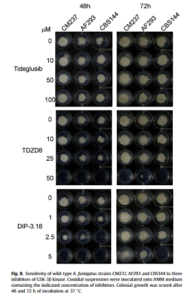Submitted by Aspergillus Administrator on 21 October 2011
 A number of Aspergillus species produce substances of great commercial use to mankind. For example A. niger is used to produce citric acid and A. oryzae and A. sojae are used to make miso and soya sauce.
A number of Aspergillus species produce substances of great commercial use to mankind. For example A. niger is used to produce citric acid and A. oryzae and A. sojae are used to make miso and soya sauce.
Alcohol is metabolised in the liver but excess alcohol can lead to acute and chronic liver diseases such as hepatitis, cirrhosis, fatty liver and liver cancer. The problem is even more concerning, as alcohol abuse can lead to other organ failures and damage including the heart, pancreas, immune system and reproductive system. There is much evidence indicating that oxidative stress by reactive nitrogen and oxygen molecules is harmful to the liver, whilst ethanol stress causes a decrease in the antioxidative function of liver cells rendering them susceptible to damage in this way.
All aspergillus species produce metabolites of a diverse nature. A particular Aspergillus species derived from a marine brown algae – produces two such metabolites – emodin and chrysophanol, which have now been shown to protect liver cells from ethanol toxicity, when studied in a lab culture system. By measuring a number of different markers of oxidative stress in a well studied liver cell line – it was shown that emodin and crysanophol were able to inhibit an enzyme – gamma glutamyl transferase – produced in reponse to alcohol damage of liver cells.
News archives
-
Title
Date


 ,
,  ,
, 






